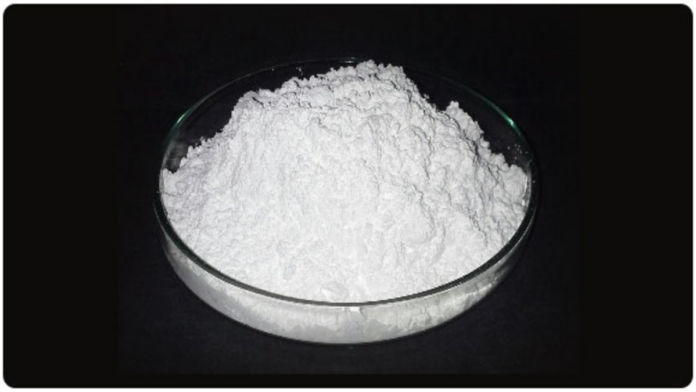Hexagonal boron nitride is a 2D material with a layered structure. Its atomic structure consists of alternating nitrogen and boron atoms. As the shearing of the van der Waals layers takes place, its 2D laminar structure offers an ultra-low coefficient of friction. It can be used in tribological applications for lubrication and wear-resistance coatings.
It has properties like chemical inertness and impermeability therefore it is used in anti-corrosion coatings and high-temperature oxidation-resistant coatings. It is known for its high thermal conductivity and is a high-temperature ceramic material.
Friction and wear have been the major issues known for energy loss and mechanical failure in machinery. Lubricants have to be used for such machinery. Hexagonal boron nitride – hBN is a solid lubricant and is used for lubricating machinery. It is considered to be a very effective solid lubricant for high-temperature applications.
It has strong nitrogen-boron covalent bonds within the layers and weak Van der Waal forces between the layers. The atomic shear plane shows low strength because of these weak forces. It leads to excellent friction-reducing and anti-wear properties.
It is suitable for hot and cold processes because of low thermal expansion, high thermal conductivity, and low dielectric constant. It is a cheap lubricant and environmentally friendly. It shows superior tribological properties when added to engine oils, vegetable oil, or water. It can be used as a dry lubricant or as an additive in liquid lubricants.
How can nanoparticles improve lubrication?
Hexagonal boron nitride nanoparticles can be used for lubrication in many ways. Some are creating a protective film, rolling effect, mending and polishing effects. Decomposition and the adsorption of nanoparticles on the rubbing surfaces leads to the formation of tribofilm which reduces wear and friction.
Surfaces that come in direct contact can be separated by a layer of nanoparticles called the protective film. The rolling effect is when the nanoparticles act as ball-bearing against the rubbing surfaces during a process like sliding or plowing.
When two surfaces rub against each other it will lead to wear and the nanoparticles fill in the surface defects. This is called Mending. Polishing effects refers to the reduction of the surface roughness due to nanoparticle-induced abrasion between the rubbing surfaces.
Synthesis of hexagonal boron nitride
The growth mechanism consists of the following:
- Decomposition of the precursors like ammonia borane, borazine, and more. The precursor decomposes into nitrogen and boron-containing species at high temperatures.
- Decomposition and nucleation where the nitrogen and boron-containing species deposit onto the metal surfaces and combine into clusters.
- Continuous growth where the clusters grow into large hexagonal boron nitride islands which finally attach to form a continuous film.
Hexagonal boron nitride nanoparticles
Hexagonal boron nitride nanoparticles can withstand high temperatures and pressure and can be used in applications where lubrication at high temperatures is required. The boron and nitrogen atoms form hexagonal rings which are stacked together to form a lattice structure.
When a force is applied parallel to these planes the atom’s easy shearing of the planes takes place which results in effective lubrication and reduction of friction.
Hexagonal boron nitride contains strong covalent bonds within the atom and this allows the highest load-carrying capacity. This is needed to avoid the asperity contact between the two surfaces.
Hexagonal boron nitride nanoparticles are porous. The friction and the wear of the metallic surfaces are reduced due to the adsorption nature of the nanoparticles. The porous end of the particles is adsorbed onto the metal surfaces and forms a layer on the surface. This helps to reduce the friction and wear.
The use of lubricants has a significant effect on the environment due to fast chemical degradation. Nanoparticle-based lubricants are getting attention for their friction-reducing properties. When the hexagonal boron nitride nanoparticles are added as an additive to lubricating oil they show better friction and wear-reducing properties.
Example
In engines, the two metallic surfaces slide against each other. The temperature and the friction rise drastically at the interface. This leads to structural weakness and deterioration of the material. If a lubricant is not used then a direct asperity content can take place between the two surfaces. This can result in friction and wear due to the mechanical action of the components.
Hexagonal boron nitride nanoparticles when used can help to reduce friction and wear as they can withstand high temperature and pressure.
Hexagonal boron nitride corresponds to graphite and is a more stable and softer form. It is also known as ‘White graphite’. It is used as a lubricant where the thermal conductivity and the chemical reactivity of graphite can cause problems.


The content Team Writer is one of the writers from our team of content writers. The Business Goals blog is expanding day by day and we need more writers and brand ambassadors for promoting our media website. If you are interested contact your portfolio through the Write for Us page.
















































